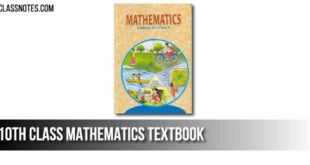9th CBSE English Pre-Mid Examination Question Paper (2019-20)
Time: 3 hr
M.M. 80 marks
Date: 25/06/2019
Class: IX
Subject: English – 9th CBSE English Pre-Mid Examination
General Introductions:
- The question paper is divided in to three sections:
Section A – Reading [20] Section B – Writing & Grammar [30] Section C – Literature Textbook & Supplementary Reading Text [30] - All questions are compulsory.
- You may attempt any section at a time.
- All questions of that particular section must be attempted in the correct order.
Section A (Reading) 9th English Pre-Mid Exam
Question: 1. Read the following passage carefully. [8]
- Coorg is the heart of India’s coffee country. Coffee is the world’s most heavily traded commodity after crude oil. Coorg boasts a land area four times larger than Hong Kong and seven times the area of Singapore. Most of it is under tree cover because unlike tea plants, the coffee bush requires shade.
- India is acknowledged as the producer of the finest mild coffees. Coorg and the neighboring Chikmagalur districts in Karnataka have consistently produced and exported high quality coffee for over 150 years. The coffee output of these two districts accounts for. Coorg coffee is valued for its blue colour, clean beans and fine liquoring qualities and hence is in demand in the international markets.
- In march and April, the coffee blossom time in Coorg, when blossoms transform into berries, the bushes are cropped. The cherry-red fruit is then pulped; the seeds are separated, dried and sent for curing. Coorg or Kodagu is the district which is one of the largest producers of pepper, cardamom and honey in the world.
- Not much is know about the early history of Coorg. Recorded history is available only from 1600 AD onwards when Kodava rajas ruled over the region and established their capital at Mercara by constructing a mud-walled fort The martial Kodavas troubled Hyder Ali and his son Tipu Sultan, who ruled the Mysore region in the 18th century, by way of sporadic rebellions. But in 1785, Tipu’s large army marched into Kodagu and devastated the kingdom. Fourteen years later, with the help of the British, who defeated Tipu Sultan following the historic siege of Srirangapatana in 1799, Coorg regained independence and under the leadership of Raja Veerarajendra rebuilt the capital. Later in 1834, the British exiled its ruler Chikkaveera Rajendra and assumed administrative charge of the district The British left India in 1947, leaving behind legacy of coffee plantations, colonial buildings and well-planned roads networks.
1.1 On the basis of your reading, answer the following questions briefly.
- How large is Coorg district?
- Why is most of Coorg district under tree cover?
- How much coffee does Coorg and Chikmagalur districts of Karnataka produce?
- Why is Coorg coffee in demand in he international markets?
- Explain the procedure involved in making coffee.
- What led Tipu Sultan to devastate the Kodagu kingdom?
- When did the Coorg region regain independence?
- What did the British leave behind when they left India in 1947?
Question: 2. Read the following passage carefully. [12]
The first train in the country had run between Roorkee and Piran Kaliyar on December 22, 1851 to temporarily solve the then irrigation problems of farmers. A large quantity of clay was required, which was available in Piran Kaliyar area, 10 km away from Roorkee. The very first commercial train journey in India was between Bombay and Thane on 16th April 1853 in a 14-carriage long train, drawn by 3 locomotives named Sultan, Sindh and Sahib. It was around 21 miles in length and took approximately 45 minutes. With the spread of science and new technological developments, a reliable and time-honoured system is giving way to newer ones – unconcerned with the beauty and charm of the old. It was against this background that the idea of setting up a Rail Transport Museum was conceived in 1962, it took concrete shape in 1970 and the foundation stone for the museum was laid down. A British engineer, Robert Maitland Brereton, was responsible for the expansion of the railways from 1857 onwards. The Calcutta-Allahabad-Delhi line was completed by 1864. The Allahabad-Jabalpur branch line of the East Indian Railways opened in June 1857. By 1857, about £95 million were invested by the British companies in Indian railways. It later transpired that there was heavy corruption in these investments, on the part of both, members of the British Colonial Government in India, and the companies that supplied machinery and steel in Britain. By 1880, the network route was about 14,500 km (9,000 miles), mostly radiating inward from the three major port cities of Bombay, Madras, and Calcutta. By 1895, India had started building its locomotives and in 1896 India sent engineers and locomotives to help build the Uganda Railways. In 1901, an early Railway Board was constituted, but the power were formally invested under Lord Curzon. It served under the Department of Commerce and Industry and had a government railway official serving as chairman, a railway manager from England and an agent of the company railways as the other two members. For the first time in its history, the Railway began to make a profit.
(ii) On the basis of your reading of the passage, answer the following questions briefly. [2×4=8]
- When and where had the first train in the country run and why?
- When and where was the first commercial train started in India?
- Who was responsible for the expansion of the railways?
- When was the early Railway Board constituted in India?
(ii) Choose the most appropriate words from the options given below. [1×4=4]
(a) The word ‘transpired’ means:
- Emerged
- Restlessness
- Lacking patience
- none of these
(b) The word ‘time-honoured’ is similar to the words:
- timeless
- a query
- old
- respected in all times
(c) The meaning of the word ‘formally’ is
- officially
- unofficially
- professionally
- none of these
(d) The word ‘locomotives’ means
- a powered railway vehicle used for pulling trains
- a railway tracks
- train which carries passengers
- none of these
Section B (Writing & Grammar) 9th English Pre-Mid Exam
Question: 3. You are Aradhya. Write a dairy entry in 100-150 words, describing your visit to an old home and how you felt in the company of these old homeless people. [8]
Question: 4. Develop a short story, in 150-200 words, using the beginning given below. Give a suitable title to the story. [10]
Question: 5. Read the following passage. Fill in the blank by choosing the most appropriate options from the ones given below: [4] She reached school (a) …………. bus and walked (b) ……………. the building (c) ……………. her bag and bottle. She (d) ……………. Very scared.
(a) (i) in (ii) at (iii) by (iv) for
(b) (i) across (ii) for (iii) through (iv) into
(c) (i) with (ii) on (iii) for (iv) of
(d) (i) to (ii) will (iii) Was (iv) of
Question: 6. The following passage has an error in each line against which two blanks are given. Write the incorrect word in the first and the correction in the second blank: [4]
as it lie sparkling in the sunshine, with
its building reflecting in the waters
of the canals. There are much beautiful churches
places and museums. In fact most their
buildings are places long ago, so they look
grand and safety. Some of them have been convert into
museums but libraries.
(b)…………… ……………..
(c)…………… ……………..
(d)…………… ……………..
(e)…………… ……………..
(f)…………… ……………..
(g)…………… ……………..
(h)…………… ……………..
Question: 7. The words and phrases are jumped up in sentence. [4] Rearrange them to make meaningful sentences.
- The wall paintings / the Indian history / starts from / of Ajanta / of paintings.
- The golden period / of the / these paintings / represent / Indian art / these
- of / are / varied / paintings / the subjects / these
- aspect / of life / have / artistically illustrated / different / been
Section C (Literature & Supplementary Reading Text)
Question: 8. Read the extracts and answer any one extract out of two. [1×4=4]
(i) The mechanical teacher had been giving her test after in geography and had been doing worse and worse until her mother had shaken her head sorrowfully and sent for the Country Inspector.
He was a round little man with a read face and a whole box of tools with dials and wires. He smiled at margie and gave her an apple, then took the teacher apart. Margie had hoped he wouldn’t know how to put it together again, but he knew how all right and, after an hour or so, there it was again.
-
What had she been doing worse and worse?
-
Explain ‘then took the teacher apart’.
-
What had Margie hoped? How were her hopes belied?
-
Which word in the passage means ‘trembled’?
OR
(ii) then took the other, as just as fair,
And having perhaps the better claim
Because it was grassy and wanted wear;
Though as for that the passing there
Had worn them really about the same,
- Which road did the poet take?
- Why did the poet take the other road?
- Was it a worn out road or a less travelled path?
- Why was the poet in a state of dilemma?
Question: 9. Answer the following questions in 30-40 words each: [2×5=10]
- Explain how Margie and Tommy were assessed in their subjects?
- Why was Pungi banned by Aurangzeb?
- Which road does Robert Frost choose and Why?
- What are the things the child seen on his way to the fair? Why does he lag behind?
- ‘Toto was a pretty monkey’. In What sense is Toto pretty?
 Class Notes NCERT Solutions for CBSE Students
Class Notes NCERT Solutions for CBSE Students







